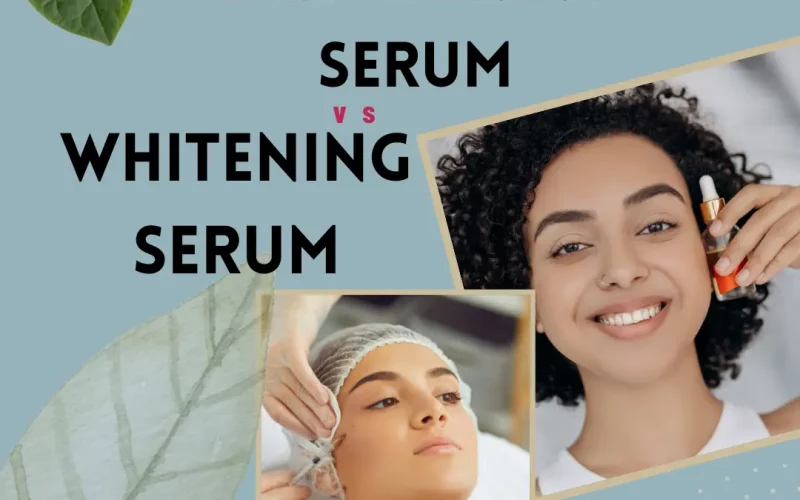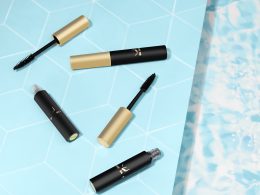Every few months the beauty aisle seems to invent a new word for glow. “Radiance,” “tone-up,” “luminizing,” “white,” “light”—the vocabulary is vast, but the questions shoppers ask remain stubbornly consistent: Will this bottle make my skin look healthier or paler? And does that even matter? The simple truth is that “brightening” and “whitening” are not synonyms. One polishes what you already have; the other tries to repaint the canvas. Below is a jargon-free guide that separates marketing myth from ingredient reality, so you can decide whether a brightening or a whitening serum belongs in your routine.
Decoding the Language: Brightening vs. Whitening in Skin Care
Language is never neutral in beauty. “Brightening” typically promises to enhance the way light bounces off the surface of the skin—think clarity, uniformity and a healthy sheen. “Whitening,” by contrast, historically implies an overall reduction of melanin production to achieve a lighter complexion. That shift from glow to tone change is more than semantics; it has ethical, safety and regulatory implications that vary widely across cultures.
What a brightening serum really does
Brightening face serums borrow tools from two arenas: gentle resurfacing (to sweep away dead cells that mute reflection) and advanced antioxidant defense (to prevent future dullness). Core players include:
- Vitamin C (ascorbic acid or its stabilized derivatives) – jump-starts collagen synthesis and interferes with enzymatic browning that makes skin look sallow.
- Niacinamide (vitamin B3) – reinforces the barrier, reduces residual redness and smooths the look of pores without altering your innate pigment.
- Poly-hydroxy acids (e.g., gluconolactone) – resurface delicately, making skin appear more translucent and less rough.
- Botanical brighteners such as turmeric, liquorice root, pineapple enzymes or bearberry leaf.
When used once or twice daily, most brightening serums begin to reveal results in four to six weeks—roughly one epidermal turnover—without changing your natural skin shade. They’re the cosmetic equivalent of polishing silver until it catches the light again.
Inside a whitening formula
Whitening serums take a more assertive route: they aim to dampen melanin synthesis at the source or accelerate its removal from the epidermis. Common actives are:
- Hydroquinone (2–4 %) – a potent tyrosinase inhibitor that many dermatologists restrict to short, supervised cycles because of the risk of rebound hyperpigmentation and ochronosis.
- Arbutin (high concentration) and kojic acid – naturally derived inhibitors; safer than hydroquinone but still capable of irritation in sensitive users.
- Glutathione and cysteamine – antioxidants that also modulate tyrosinase pathways, sometimes used in prescription blends.
- High-strength retinoids or glycolic acid – speed up cell turnover so pigment is shed faster.
Because these mechanisms influence the skin’s intrinsic colour, regulators treat such products as quasi-drugs (Japan), over-the-counter drugs (U.S.) or cosmetic actives with strict percentage caps (EU, India). Always patch-test, follow maximum-duration guidelines and consult a professional if you have medium-to-deep Fitzpatrick tones, which can paradoxically darken under aggressive lightning attempts.
Label detective: three quick tests
- Look at the claim language. “Brightening” often appears alongside words like glow, revitalizing, fatigue relief. “Whitening” is usually paired with fairness, bleaching, or tonal shift.
- Scan the ingredient order and percentages. A brightening serum may list vitamin C at 10–20 % or niacinamide at 5 %. A whitening serum might front-load hydroquinone, kojic acid or strong acids nearer the top of the INCI list.
- Read the usage instructions. Night-only directions, mandatory sunscreen, or a strict 8-to-12-week course hint at a whitening-strength formula.
How to choose responsibly
Start with your real concern, not the trend. If dullness or uneven glow is the issue, invest in a brightening product first—it delivers visible payoff with minimal disruption. Reserve whitening strategies for stubborn melasma or post-inflammatory hyperpigmentation that hasn’t budged after gentler approaches, and do so under medical guidance.
Guard your barrier fiercely. Both serum types expose fresher cells to the environment. Pair them with a broad-spectrum SPF 30 or higher and a bland, ceramide-rich moisturizer to buffer irritation.
Consider your cultural lens. Skin-tone hierarchy is baked into many marketing messages. A radiant complexion is universal; an imposed ideal of fairness is not. Choose efficacy over ideology, and reject shade-shaming language that positions lighter as better.
Beyond the bottle: ethics and sustainability
Ingredient choice isn’t the only dimension that matters. Look for:
- Responsible sourcing. Vitamin C extracted from non-GMO corn, kojic acid produced via green fermentation or arbutin derived from upcycled pear skins all lower environmental impact.
- Recyclable packaging. Airless pumps made of mono-material plastics or glass vials with aluminum caps are easier to recycle than mixed-material droppers.
- Transparent testing. Brands that publicly share stability data, pH profiles and safety assessments signal accountability—especially critical for high-potency whitening actives.
A serum that brightens your conscience is as satisfying as one that brightens your skin.
Routine choreography: making your serums play nice
If you enjoy layering multiple face serums, apply the most water-like texture first and the richest last. A typical nighttime lineup might look like: gentle cleanser → hydrating tonic → brightening vitamin C serum → peptide or barrier serum → moisturizer. Reserve retinoid-based or whitening products for a separate evening to minimize irritation, and never combine hydroquinone with leave-on acids unless instructed by a dermatologist.
Final word: the spectrum, summed up
In the ongoing conversation about brightening serum vs whitening serum, remember that the difference boils down to illumination versus alteration. One polishes the window so the light can escape; the other attempts to repaint the glass itself. Ask what story you want your face serums to tell, and choose the chemistry—and the vocabulary—that supports that narrative rather than rewriting it. A healthy glow earns its applause from the inside out.












